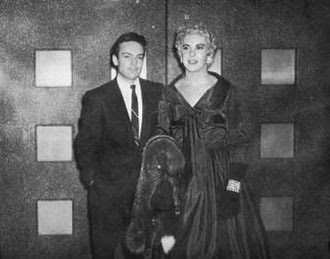If you’re a reader of my Femulate articles, you may remember that my Mom and Aunt were both accomplished seamstresses. Both went to a technical high school for dressmaking and worked for various 7th Ave fashion houses in Manhattan during the 40’s.
I’ll digress from my main point to swoon a bit over the fashion and glamour of the 1940’s. The debut of nylon stockings, tailored skirt suits, A-line dresses, peep-toe pumps, high-waisted slacks and red lipstick. (sigh)
Okay. Sorry, I’m back. My parents withdrew to the suburbs and my Mom went to work in a factory. However, she never gave up her dressmaking and our basement became her sewing room. She made all of her and my sister’s dresses and until I entered my teens, she made me shorts in summer out of leftover materiel. Some of these shorts had a less than masculine print. These didn’t play well in the neighborhood and just confirmed the feeling deep down that I should have been a girl.
The sewing room was a tornado of gowns, dresses, piles of materiel and closets filled with previous creations. I wasn’t athletic and happily gave up my baseball glove to play fashion model in front of the three-sided mirror.
Often losing track of time, when shortly after five my Dad would rumbled through the back door. I could change out of a full-length gown complete with foundation garments, hose and heels, into jeans and t-shirt in about 60 seconds. If that had been a track and field event, I surely would have been All-American!
With his brow furled, my father would ask suspiciously, “What are you doing down there?”
My stock answer, “Playing ping-pong.”
So where am I going with all this? This sounds like the lead in to a Sandy Thomas novelette. It’s not, although my Mom did coax into wearing some of the gowns she made, while she hemmed or fitted them. However, that happened only a handful of times and it wasn’t very exciting. By the way, as you may have guessed, didn’t take a lot of coaxing.
What I did learn was how to run a sewing machine. I could sew zippers, buttons, buttonholes and hems. My Mom would put me to work during the spring season when she would make dresses for bridesmaids and proms. At 25 cents per button and buttonhole and $1 for zippers and hems, I was happy in more way than one way.
It didn’t take me long to put my new skills to work for myself. All the girls in my 8th grade class were wearing these above the knee mini dresses with either black or white fishnet stockings. I decided to make my own and went to work after school in the basement, cutting the pattern, sewing the facing and darts, then the zipper and finally the hem. A simple black shift, I wore it with pride and spent hours after school wearing it around the empty house.
Years later, I would save the day at my wife’s college roommate’s wedding. The bridesmaid dresses were all homemade. The night before the wedding, one of the other bridesmaids could not fit into her dress.
Panic ensued and the search for a seamstress or another dress began. Another dress similar in style and similar in color was found, it was expensive, and not quite matching.
I stepped forward and with nothing to lose, three skeptical women surrendered the aqua, satin, A-line to my supposed dressmaking skills. Making my mother proud, I tore out the seams to muffled gasps then re-stitched them gaining a ½ inch on both sides.
Soon after, happy laughter from the other room confirmed that the dressed zipped up with room to spare. Everyone was thrilled and the bride thanked me for saving the day.
There was a flurry of questions about how, when and where I learned to do this and one the girls declared, “When I get married, I want you as one of my bridesmaids.”
Later at the reception, with the wine flowing freely, the same bridesmaid continued to gush about the dress, “I never knew a man who knew so much about dresses, she laughed nervously. Maybe there’s a girl trapped inside of you?”
Maybe?
 |
| Wearing Boston Proper |
 |
| Linus Rosenauer, model |

















































